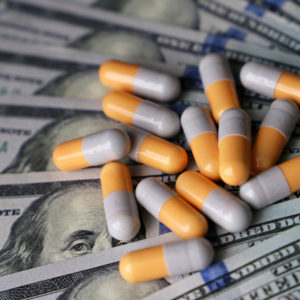President Trump sent letters to 17 pharmaceutical companies demanding that they “bring down the prices of prescription drugs in the United States to match the lowest price offered in other developed nations.” He calls it the “most-favored-nation,” or MFN, price.
Trump is right that Americans generally pay more for brand-name drugs, but they also pay significantly less for most generics, which account for more than 90 percent of the prescription drugs in the United States. If Trump wants to see lower drug prices in the United States, there’s an easier way to do it than trying to import other countries’ government-imposed price controls. In fact, many Americans already have access to much lower drug prices, not through the black market but through the free market.
Take the GLP-1 weight-loss drugs manufactured by Novo Nordisk and Eli Lilly. Their list prices are typically more than $1,000 per month. Both companies offer a direct-to-consumer cash price of $499 per month, which is half the retail price. How can they do that? By bypassing the middlemen — pharmacy benefit managers and health insurers.
That’s not all. A quick look at Mark Cuban’s Cost Plus Drug Co. demonstrates how much can be saved when bypassing the PBMs. Cost Plus is a nonprofit that negotiates directly with drug companies. It lists hundreds of drugs, many of them very popular, at a cash price that’s significantly lower than at a retail pharmacy.
For example, when Wisconsin-based Network Health announced last February that it had aligned with Cost Plus, it said it was “one of the first Medicare Advantage plans in the country to be able to offer prescription medication savings of up to 37 percent on average, and in some cases even more, to its members.”
The point is, Americans can have access to lower-cost prescription drugs — in some cases, costs that are even lower than those in many developed nations — without going through the MFN machinations.
More important, Americans will continue to have access to most new drugs, which citizens of most other countries can’t claim.
Most developed countries have government-run healthcare systems. The government must balance healthcare spending with other claims on government funds. One place where governments cut is prescription drugs. The government tells a drug company what it will pay for a specific drug, and the company must decide whether to accept that price. If the drug company declines, people in that country miss out on the benefits of having the drug. About 85 percent of newly released drugs are available in the United States, but less than half in some of the other developed countries.
The companies also know that if they reject the government-proposed price, some countries will resort to “compulsory licensing,” which allows a domestic manufacturer to ignore the U.S. drug company’s patents and make the drug itself.
Consider the irony in Trump’s MFN proposal. The United States has the most innovative drug industry in the world, and its effort to develop cutting-edge therapies necessarily comes with a higher price tag. Likewise, Trump has some of the most attractive and highly sought-after properties in the world, ranging from luxury hotels to resorts to golf courses, for which he charges higher-than-average prices. He would consider it outrageous if some country told him he had to charge the same price to stay at his resort hotels as the lowest price charged in other developed countries. Yet, he’s using that tactic on drug companies.
Trump could have addressed these price discrepancies in his tariff negotiations. He didn’t. He’s demanding that other countries invest more in the United States to spur economic growth, but he hasn’t demanded their governments pay more for U.S.-made drugs.
Since drugs haven’t been part of the tariff negotiations — at least not yet — drug companies may look for other ways to offer lower prices. More of them may embrace the Novo Nordisk and Eli Lilly approach of making some of their drugs available direct to consumer. Insurers are already pressing consumers to bypass traditional pharmacies and buy a three-month supply. Drug companies may also embrace that approach. And some companies have started demanding that developed economies pay more.
There are legislative proposals that would require the PBMs to share more of the discounts and rebates they receive from drug companies with patients.
We know drug prices can be lower. We need an American solution that embraces markets, not a European solution that relies solely on price controls.

